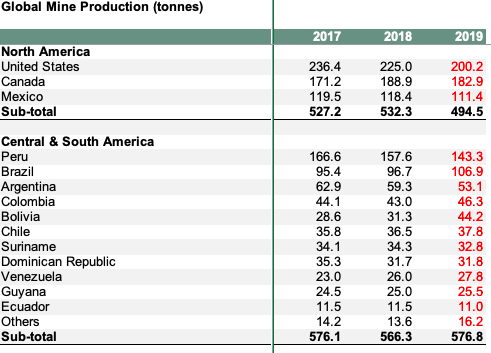Bitcoin halving: Why is the chosen number of years, specifically four?

Bitcoin’s correlation with gold has inspired many narratives over the past eight weeks. However, the correlation may be deeper than popular opinion. The halving mechanism that is coded in the asset itself, drives its shortage of supply and reduces mining rewards in half every four years. Why is the chosen number of years, specifically four?
Interestingly, Gold mining companies are finding it increasingly harder to mine Gold. Based on BBC’s recent article on Gold mining, in 2019 global gold production fell by 1%, the first decline in a decade, according to the World Gold Council, which promotes the gold industry. Some analysts argue we have reached “peak gold”, this is similar to Bitcoin’s “peak supply” of 21 Million. Hitting the peak means maximum extraction has passed and production may fall until mining ceases entirely. This leads to the insight that the “store of value” narrative that compares Bitcoin to Gold may have been embedded in design to increase Bitcoin’s value. Every four years the shortage of supply drives prices upwards due to shortage.

Gold Production Data || Source: World Gold Council
Bitcoin’s price hike is achieved by the shortage and the supply-demand dynamics of the market cycles. Every 4 years, the protocol tightens the issuance of new coins and it gets twice as tight every four years.

Bitcoin Market Cycle, phases and psychology || Source: Wallstcheatsheet.com
This shortage of supply serves more than one purpose, it helps Bitcoin slowly gain entrenchment into the existing financial rails and eventually take over as a global reserve settle money.
If this happened too quickly or linearly, governments would attempt to shut it down. If this happens slowly, with low volatility, it may have an opportunity to be adopted as “digital cash”. For adoption two types of regulators need to be convinced:
Central Banks: The creators of money in any economy and they fear, and rightly so, the initial reaction would be knee jerk as it’s adoption would mean a shift in monetary policy.
Capital market regulators: Who is concerned about the color of money that comes into the markets. They try to estimate the influx of slush money into markets and Bitcoin does appear vulnerable.
Unless these two sets of regulators are trained and taken into confidence, entering the financial market and economies, as a mainstream asset would be a challenge and this is the most important part of popularizing Bitcoins. Regulators take long enough to warm up to new technology/ change, and making headlines every 4 years, establishing patterns in the price chart is a challenge that BTC took. And a decade later, from being labeled tulips, it is being discussed and it is driving revolutionary ideas like “CBDCs”
Due to fixed supply, BTC may not have been created to entirely replace Fiat currencies, but rather to police the debasement of core currencies and protect economies like Venezuela from hyperinflation. This can only be achieved by its current halving cycle and slow entrenchment. BTC has remained on the periphery due to a lack of institutionalization for the first 6-7 years of its existence. However, institutionalization and acceptance are essential in driving it from periphery to mainstream.






